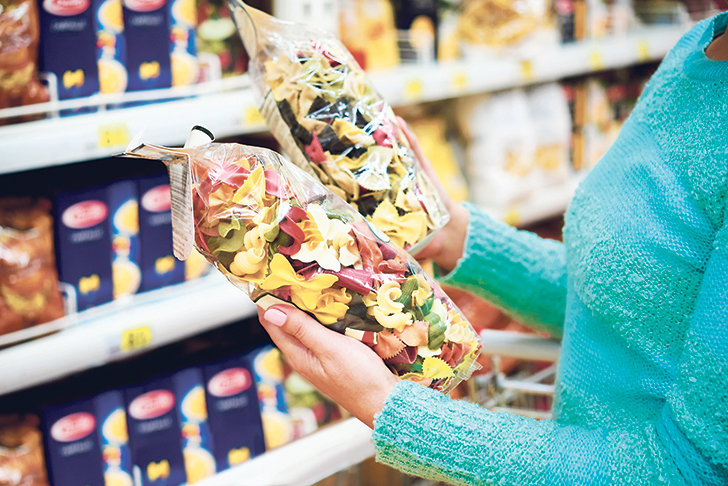Canadian durum on Italian supermarket shelves will probably face discriminatory labelling in early 2018.
The country’s agriculture and industry ministers have announced that the government is imposing a country-of-origin-labelling (COOL) scheme on packaged pasta that will require listing the origin of grain and where it was milled.
At the same time, Italy’s largest farmers’ organization has been campaigning against imported Canadian durum, describing it as “toxic” and insisting on import controls.
“We are putting Italy in the vanguard of Europe when it comes to labelling as a competitive tool,” Italian Agriculture Minister Maurizio Martina said in a statement after announcing the intention to require COOL.
Read Also

Pakistan reopens its doors to Canadian canola
Pakistan reopens its doors to Canadian canola after a three-year hiatus.
The requirements will probably go into force by about early February, following typical Italian regulatory timelines.
While the protectionist move is not a welcome one for Canadian farmers, exporters and marketers, it is expected to be limited both in terms of Italian imports and especially within the world market.
“We’ve seen this movie before,” said Bruce Burnett, market analyst with Glacier FarmMedia.
“It might change our (export) destinations more than anything else.”
Burnett and other analysts said Italy can’t do without imported durum. Also, Canadian durum might be able to backfill in other markets if Italy consumes more of its own durum because of the new labels.
Italy was Canada’s second-largest durum customer in 2016-17, having imported almost 700,000 tonnes by May. Its millers and processors are significant exporters and rely upon foreign durum to blend with domestic durum in order to stay competitive in world pasta markets.
The labelling rules will force food companies to say whether the durum was grown and milled in Italy, within the European Union, from outside the EU or from a combination of sources.
Italian millers and processors have fought the move, which threatens to make their products more expensive and hurt their ability to export to foreign markets.
The Canadian embassy and Canada’s international trade and agriculture ministers have been lobbying against the threatened move for months and were not pleased to see Italy move ahead with COOL.
“It’s of great concern, and my officials are dealing with our officials in the European Union and to make sure that we have continual trade and that trade continues freely,” said federal Agriculture Minister Lawrence MacAulay.
“As you know, we have a history of this issue and we certainly don’t like it.”
Where the dispute goes from here is unclear because Italy has not followed EU rules on how to impose a regulation like this. The country is supposed to propose a regulation, then have the European Commission assess whether it is acceptable under EU rules.
Italy proposed its rule, passed it onto the EU, but then imposed a differently worded regulation before the EU had commented on the original proposed rule.
Italy’s COOL regulations could face a challenge from both the EU and at the World Trade Organization.
However, neither will likely stop the rules coming into force by early 2018, said Cam Dahl, president of Cereals Canada.
“These are not quick processes,” said Dahl about the EU and WTO.
That means Canadian exporters and Italian processors will probably face complications within the year.
“This will impose additional costs on using Canadian durum because of segregation,” said Dahl.
Saskatchewan Agriculture Minister Lyle Stewart said the COOL rules are a bad development, but Italy’s decision to jump past the EU process might actually lead to the issue being re-solved sooner.
“Italy is being very aggressive on this,” said Stewart. “They’ve bypassed the EU process now and gone straight to the WTO, and I guess maybe that isn’t altogether negative, although we had hopes the EU would stop this thing before it ever got to the WTO.”
Market impact will likely be muted because of Italian millers’ need for foreign grain. Burnett said Italy is a “value customer,” buying lower grades of Canadian durum in order to blend with expensive Italian durum to keep product prices competitive. Previous Italian actions against Canadian durum have not had a major effect.
“Farmers get ticked (at seeing foreign durum being imported), they put some pressure on and the authorities suddenly ‘find’ things and try to block imports,” said Burnett.
Dahl described the Italian government’s action as “a very dangerous game for them to play” because Italian millers and pasta makers export a lot of their product, and the requirements of segregation will add costs for them.
“They have relied upon outside product to maintain a … reasonable cost for their pasta products,” said Dahl.
North Dakota Wheat Commission market analyst Erica Olson said protectionist moves such as COOL aren’t good for North American exporters, but the commercial reality of Italy’s milling and pasta industry suggest the impact won’t be huge.
“They are a net importer of durum,” said Olson.
















